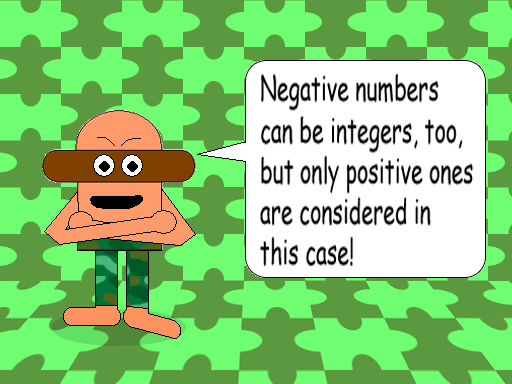
(x^2 + x)/2 = y
x = the final integer, y = the sum
1 - 2 - 3 - 4 = -8
1 - 2 - 3 - 4 - 5 - 6 = -19
1 - 2 - 3 - 4 - 5 - 6 - 7 - 8 = -34
-((x^2 + x)/2) + 2 = y
x = the final integer, y = the difference
Note: The difference is always negative. (If x ≥ 2)

When you see a negative sign to the left of the left parenthesis, it means multiply what's inside by -1.
1 - 2 - 3 - ... - 25 = -323
-((25^2 + 25)/2) + 2 = -((625 + 25)/2) +2 = -(650/2) + 2 = -325 + 2 = -323
In this case, x = 25 & y = -323
If you have a graphing calculator, then you can see that this quadratic function intersects with the original function for sums of consecutive integers! In fact, they intersect twice! (At x = -2 or 1; y = 1 for both intersections)
1 - 2 = -1
-((2^2 + 2)/2) + 2 = -((4 + 2)/2) + 2 = -(6/2) + 2 = -3 + 2 = -1
In this case, x = 2 & y = -1
Note: Like division, subtraction isn't commutative, either. So the formula of this math trick shows the difference you get if you start at 1.
Back to Index Page Back to Math Trick Menu
© Derek Cumberbatch